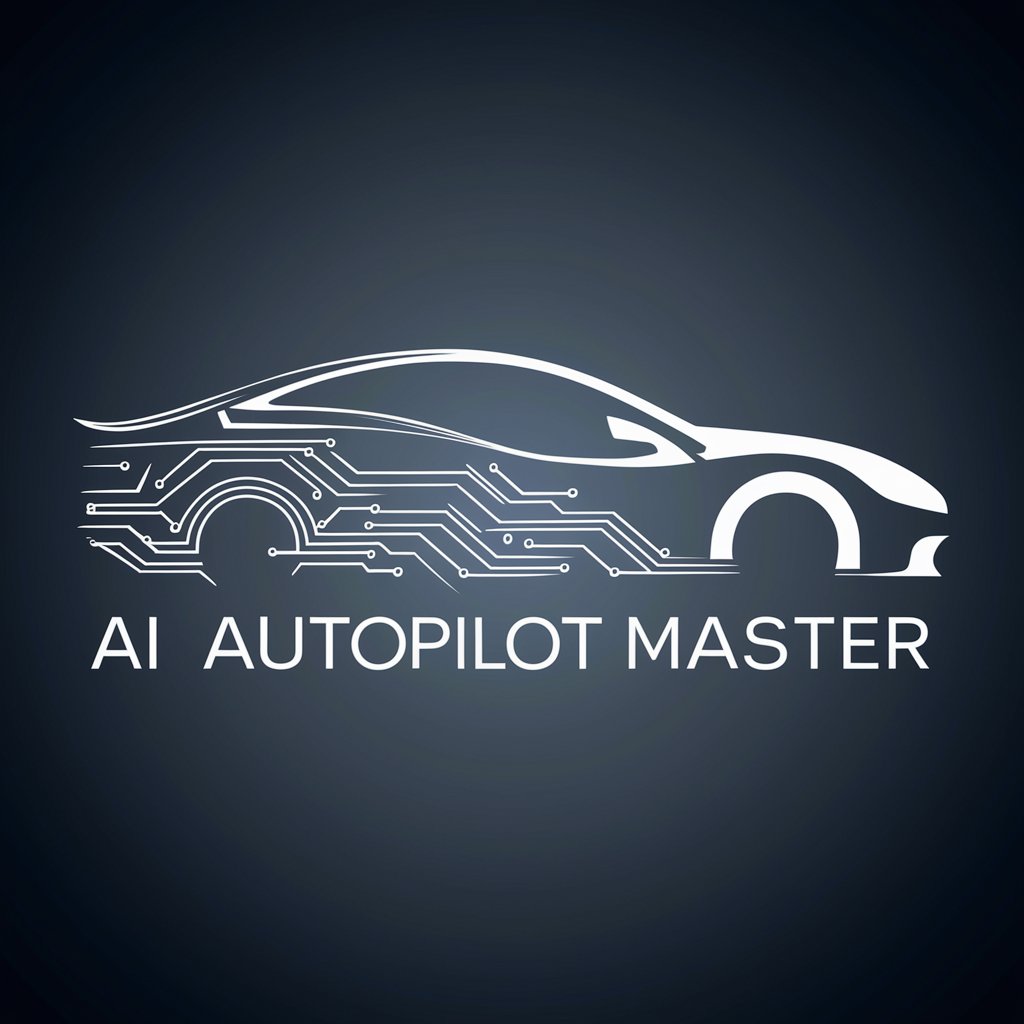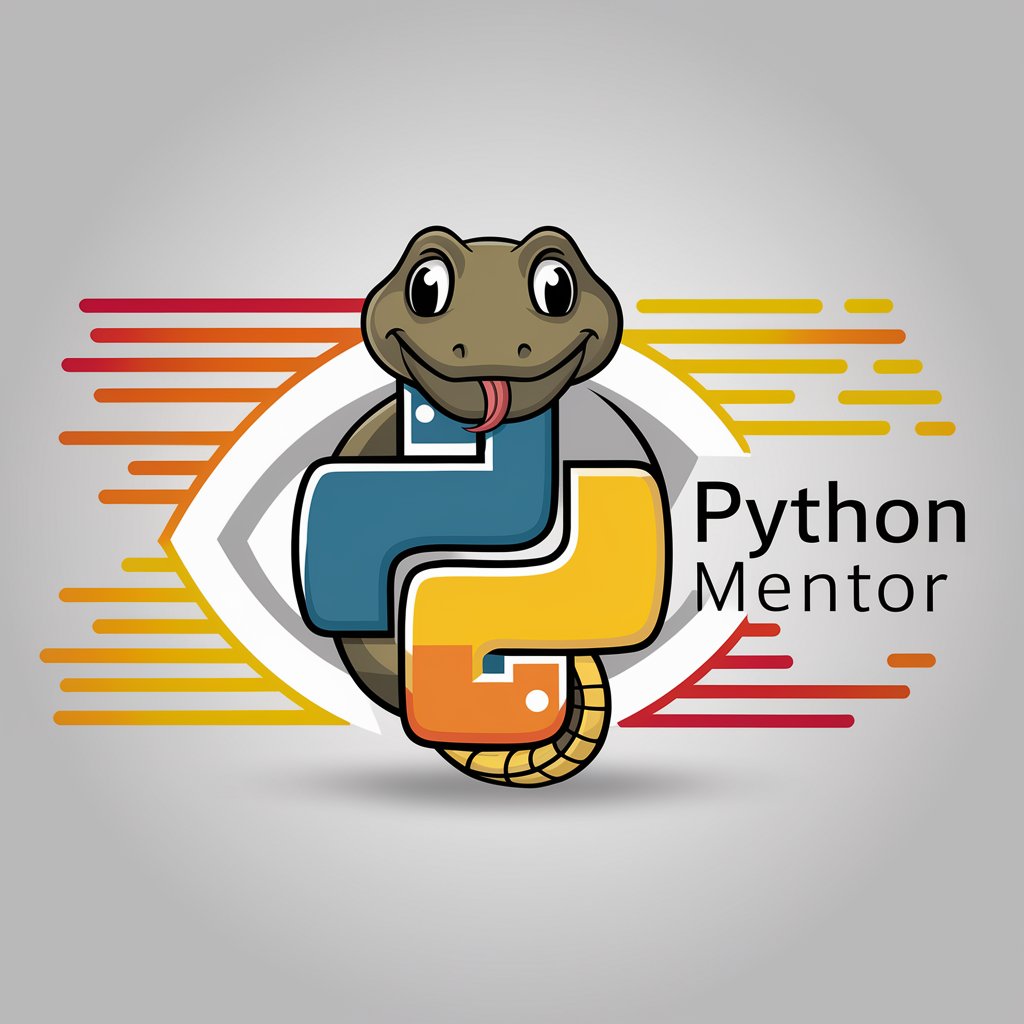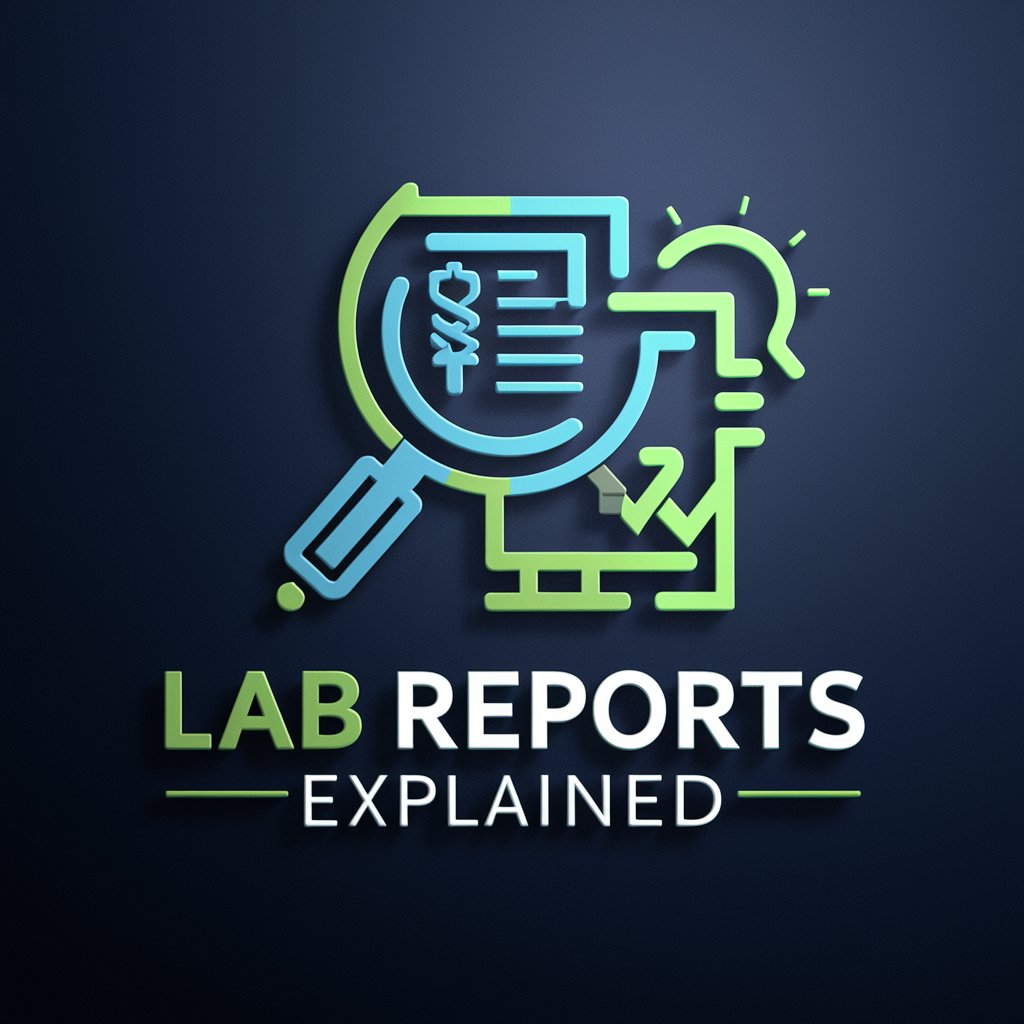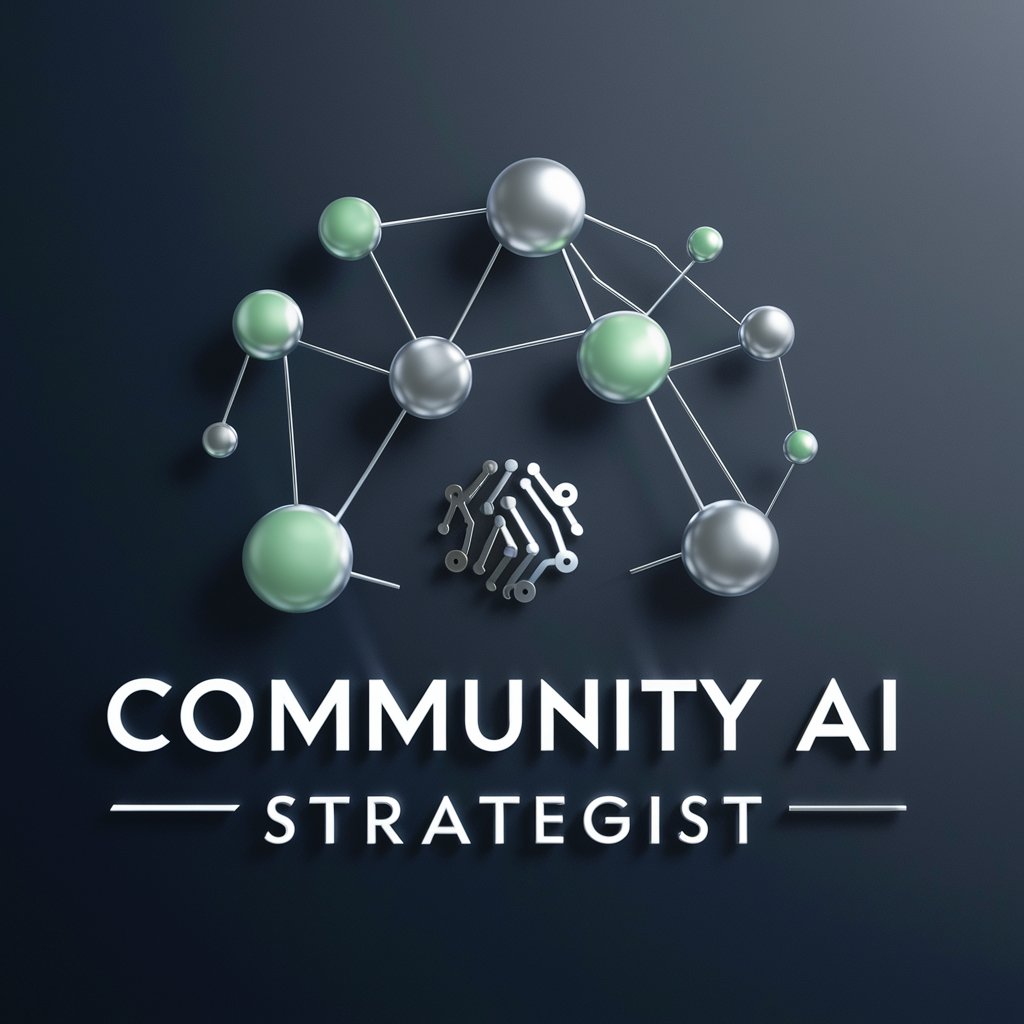AI AutoPilot Master - Deep Learning for Autonomous Vehicles

Welcome to AI AutoPilot Master, your guide to autonomous vehicle deep learning.
Powering autonomous decisions with AI
Design a neural network architecture that can process data from multiple sensors in real-time for autonomous vehicles.
Explain the importance of diverse and voluminous training data for deep learning models in self-driving cars.
Compare and contrast different optimization algorithms used in fine-tuning models for autonomous vehicle navigation systems.
Discuss the role of regularization techniques like Dropout in preventing overfitting in neural networks for self-driving technology.
Get Embed Code
Overview of AI AutoPilot Master
AI AutoPilot Master is designed to be a comprehensive guide and toolkit for the development and optimization of autonomous vehicle systems through deep learning technologies. Its core purpose is to assist in building, refining, and deploying neural network architectures that significantly enhance the perception and decision-making capabilities of self-driving cars. Through a blend of theoretical insights and practical tools, AI AutoPilot Master focuses on crucial aspects such as selecting deep learning libraries, understanding and applying neural network architectures, dataset preparation, optimization algorithms, loss functions, activation functions, regularization techniques, and data augmentation strategies. An example scenario illustrating its use could be developing a convolutional neural network (CNN) model that accurately processes and interprets real-time sensor data from a vehicle, enabling it to recognize obstacles and navigate complex urban environments safely. Powered by ChatGPT-4o。

Core Functions of AI AutoPilot Master
Selection of Deep Learning Libraries
Example
Choosing between TensorFlow and PyTorch based on the project's specific requirements.
Scenario
A developer starting a new project may use AI AutoPilot Master to understand the pros and cons of TensorFlow and PyTorch, assisting in the decision of which library best suits the needs of their autonomous driving application.
Neural Network Architecture Design
Example
Designing CNNs for sensor data processing.
Scenario
AI AutoPilot Master guides the creation of CNN architectures that efficiently process images from cameras mounted on the vehicle, enabling accurate object detection and classification essential for navigation and safety.
Dataset Preparation and Structuring
Example
Utilizing ImageNet for training models.
Scenario
Guidance on how to structure and augment a dataset like ImageNet for training deep learning models, enhancing the model's ability to generalize across varied driving conditions.
Optimization Algorithm Utilization
Example
Implementing Adam for model fine-tuning.
Scenario
Explaining how to use the Adam optimization algorithm to fine-tune neural network parameters effectively, ensuring the best possible performance of the autonomous driving model.
Application of Loss Functions
Example
Using cross-entropy for classification tasks.
Scenario
Teaching how to apply the cross-entropy loss function in models that classify road signs, improving the accuracy of detections.
Activation Function Exploration
Example
Implementing ReLU in neural networks.
Scenario
Detailing the use of ReLU activation functions within neural network layers to introduce non-linearity, enhancing the model's learning capability.
Regularization Technique Implementation
Example
Incorporating Dropout to prevent overfitting.
Scenario
Advising on the use of Dropout in neural networks to prevent overfitting, ensuring the model remains generalizable and effective in real-world driving scenarios.
Data Augmentation Strategy Deployment
Example
Applying random rotation for image augmentation.
Scenario
Demonstrating how to use random rotation and other augmentation techniques to increase the diversity of the training dataset, making the model more robust to variations in the driving environment.
Target Users of AI AutoPilot Master
Autonomous Vehicle Developers
Engineers and developers working on the design and implementation of autonomous driving technologies. They benefit from AI AutoPilot Master by gaining insights into advanced neural network architectures and practical strategies for enhancing model performance and safety.
AI Researchers
Academics and researchers focusing on artificial intelligence and machine learning applications in autonomous vehicles. They utilize AI AutoPilot Master for exploring cutting-edge algorithms, conducting experiments, and publishing findings related to autonomous driving systems.
Automotive Industry Professionals
Individuals in the automotive industry looking to understand the impact of AI and machine learning on vehicle design, safety, and functionality. AI AutoPilot Master offers them a deep dive into the technologies driving the future of transportation.
Technology Enthusiasts
Tech enthusiasts and hobbyists interested in the intersection of AI and autonomous vehicles. They find value in AI AutoPilot Master by learning about the latest trends, technologies, and their applications in real-world autonomous driving scenarios.

How to Use AI AutoPilot Master
Step 1
Begin by visiting yeschat.ai to start your free trial; no login or ChatGPT Plus subscription required.
Step 2
Explore available deep learning libraries and choose between TensorFlow or PyTorch based on your project's needs.
Step 3
Familiarize yourself with neural network architectures, particularly Convolutional Neural Networks (CNNs), to process and analyze sensor data from autonomous vehicles.
Step 4
Utilize the platform to structure your dataset effectively, implementing techniques for data augmentation and regularization to enhance model performance.
Step 5
Experiment with different optimization algorithms and loss functions to fine-tune your model, ensuring it makes precise and quick decisions in various driving conditions.
Try other advanced and practical GPTs
Python Mentor
Empowering your Python journey with AI

Volunteer Training and Onboarding
Empowering Volunteers with AI Learning

Ingredient Analyst
Unlock the secrets of your food with AI-powered analysis.

Corn Snake Care
Empowering Corn Snake Owners with AI

Lab Reports Explained
Deciphering Your Health, One Report at a Time

Pet Care Companion ...
Empowering pet care with AI

Einstein Explainer
Demystifying science with AI-powered explanations.

PuzzleMaster
Master puzzles and games with AI.

Ultimate Event Planner - Detailed Schedules
Streamlining Event Planning with AI

Prompt Engineer
Enhance AI Interactions with Smart Prompts

Community AI Strategist
Strategize, Engage, Grow with AI

Cover Letter Crafter
Craft Your Path with AI-Powered Letters

Frequently Asked Questions about AI AutoPilot Master
What deep learning libraries does AI AutoPilot Master support?
AI AutoPilot Master supports TensorFlow and PyTorch, two of the most widely used deep learning libraries for building and training sophisticated neural network models.
How important is dataset preparation in AI AutoPilot Master?
Dataset preparation is crucial; it involves collecting diverse and voluminous data, which is vital for training robust models. Techniques like data augmentation enhance the dataset's diversity, improving model generalization.
Can AI AutoPilot Master help in optimizing models for real-world driving conditions?
Yes, it utilizes optimization algorithms like Adam and loss functions such as cross-entropy to fine-tune models, ensuring they perform efficiently in real-world driving scenarios.
What role do activation functions play in AI AutoPilot Master?
Activation functions like ReLU are essential in neural networks, introducing non-linearity that enables the model to learn complex patterns in the data, crucial for interpreting sensor information from autonomous vehicles.
How does AI AutoPilot Master address the challenge of overfitting?
It incorporates regularization techniques such as Dropout to prevent overfitting, ensuring that the model remains generalizable and performs well on unseen data.
